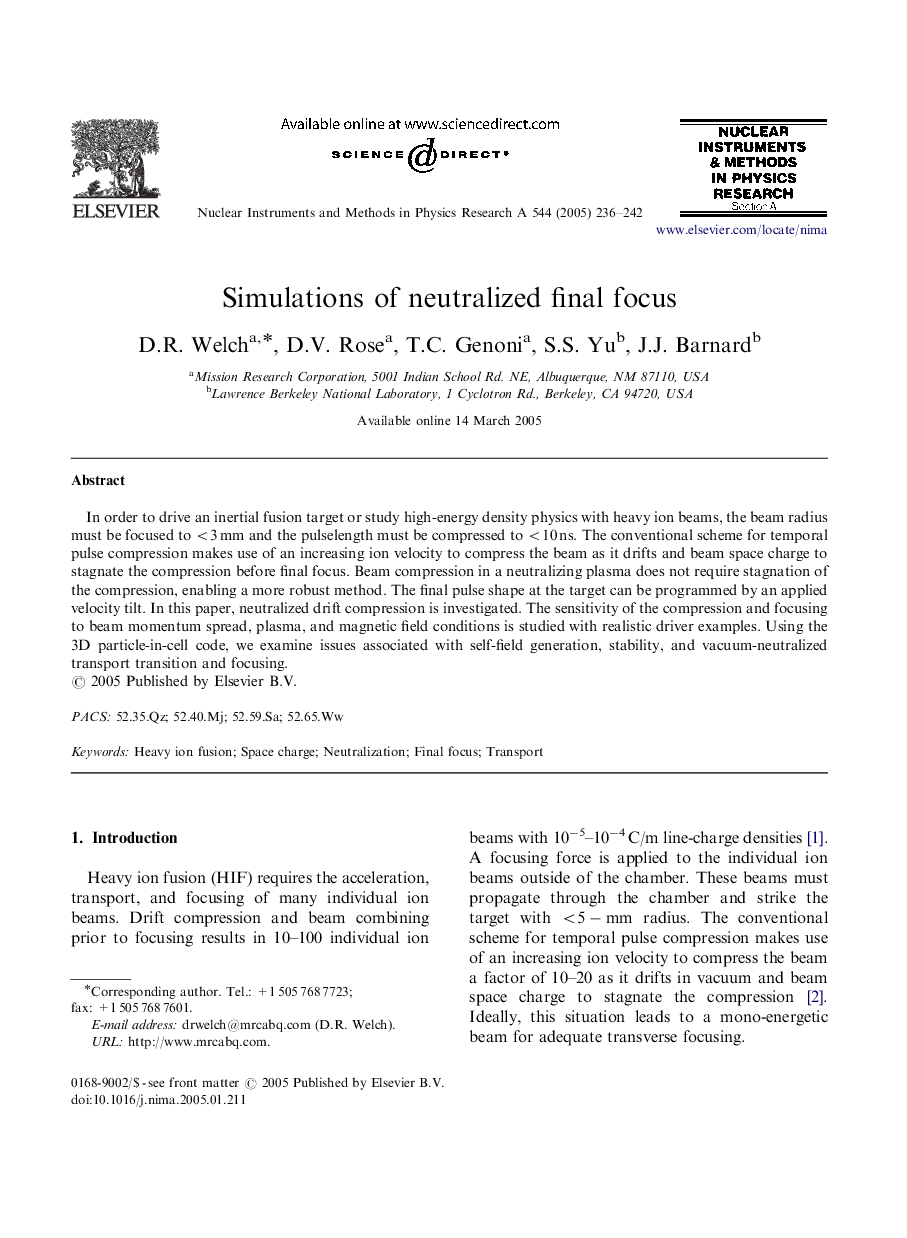| Article ID | Journal | Published Year | Pages | File Type |
|---|---|---|---|---|
| 9845465 | Nuclear Instruments and Methods in Physics Research Section A: Accelerators, Spectrometers, Detectors and Associated Equipment | 2005 | 7 Pages |
Abstract
In order to drive an inertial fusion target or study high-energy density physics with heavy ion beams, the beam radius must be focused to <3Â mm and the pulselength must be compressed to <10Â ns. The conventional scheme for temporal pulse compression makes use of an increasing ion velocity to compress the beam as it drifts and beam space charge to stagnate the compression before final focus. Beam compression in a neutralizing plasma does not require stagnation of the compression, enabling a more robust method. The final pulse shape at the target can be programmed by an applied velocity tilt. In this paper, neutralized drift compression is investigated. The sensitivity of the compression and focusing to beam momentum spread, plasma, and magnetic field conditions is studied with realistic driver examples. Using the 3D particle-in-cell code, we examine issues associated with self-field generation, stability, and vacuum-neutralized transport transition and focusing.
Keywords
Related Topics
Physical Sciences and Engineering
Physics and Astronomy
Instrumentation
Authors
D.R. Welch, D.V. Rose, T.C. Genoni, S.S. Yu, J.J. Barnard,
